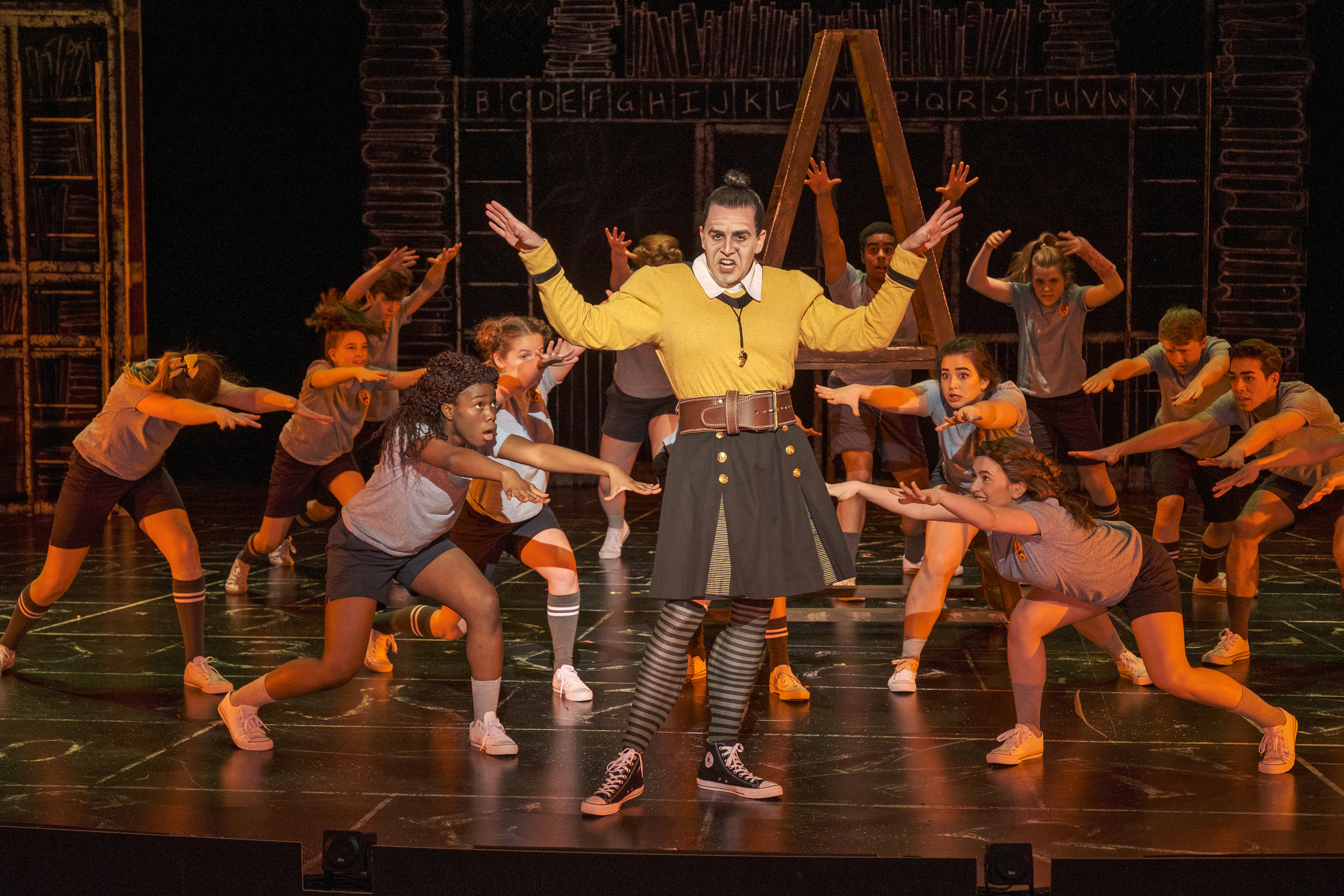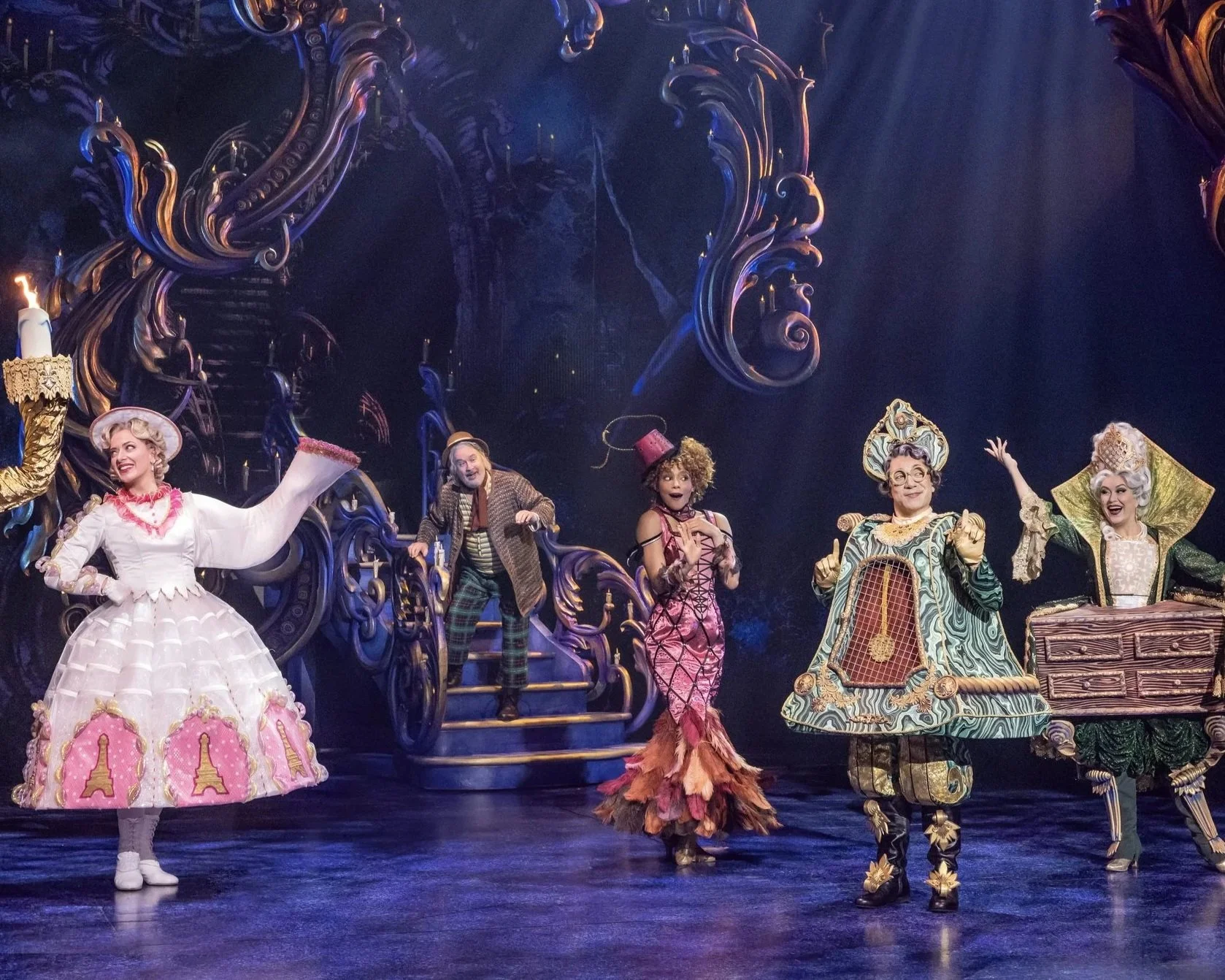Backstage with Christa Oliver

It’s easy to fall in love with the performance arts, particularly theatre, thanks to their booming vocals, stunning set design and creative costumes, and even the emotions a production can evoke from within, but one of the sometimes overlooked aspects is the choreography. While it’s easy to recognize the dancing in massive, grandiose productions, giving life to lyrics isn’t the same process with smaller shows like The Ballad of Klook and Vinette at Austin’s Zach Theatre. I went backstage with Christa Oliver, who choreographed the production, to gain insight into how she made it happen.
“Klook and Vinette has only been done at one other theatre, so this is a really new play,” she said. “Originally, it didn’t have any choreography at all, so when they invited me to choreograph I was aware of that. It was really challenging because I had to dial back the movement because I usually choreograph for big musicals like A Christmas Carol at ZACH Theatre or here with my students at Texas State for concert dance, so it was a little bit of a challenge to find inspiration for the movement.”
Roderick Sanford and CHANEL in The Ballad of Klook and Vinette at ZACH Theatre. Photo by Kirk Tuck
Oliver, who holds a master's in Dance Performance and a professional diploma in Dance Studies from Trinity Laban Conservatoire of Music and Dance, has a substantial career under her belt, having been dance captain and soloist with the national tour of The Color Purple and a dancer and actress in James Cameron's Oscar winning film AVATAR (2009). Beyond ZACH Theatre, she has also taught and choreographed for The Austin School for the Performing and Visual Arts, Austin Community College, Huston-Tillotson University, The Jewish Community Centre, and Texas State University where she is currently a Lecturer in the Dance Department. Needless to say, her career has exposed her to many professionals from across the gamut.
Christa Oliver
“I’ve been blessed to work with choreographers that are younger and then older, especially Donald McKayle who just passed last year — he’s a modern dance pioneer,” she said. “Having to work closely with him and being able to experience working with someone from a different generation brought about a whole different way of moving for me, and a whole different way of choreographing. I remember working with him, he would say ‘you’re not saying anything,’ and I’d say ‘what do you mean I’m not saying anything, I’m going for broke with this move!’ And he’d say, ‘yeah, but I want you to really focus on the intent behind the movement. What are you trying to say?’ And so when you choreograph you want the audience to have an experience. You want them to leave the theatre different than when they came in. You want them to think — you want to challenge them.”
Oliver may have had a challenge of her own in finding inspiration, but she came out on the other end with solid results, giving The Ballad of Klook and Vinette a visual appeal reminiscent to the love found in 90s R&B. And that’s because she found inspiration from one of the best.
Roderick Sanford and CHANEL in The Ballad of Klook and Vinette at ZACH Theatre. Photo by Kirk Tuck
“Having to research movement, I decided to pull from people like Jill Scott,” Oliver explained. “A lot of the music reminds me of Jill Scott and her whole approach and her vibe. So just watching her and meditating on her music really helped inspire me. It’s not a musical, so it’s harder to find gestures that would speak to the audience in a different way than it would if I were doing a musical piece.”
To make her work more true to life, Oliver took what she gained from outside sources and applied them to her own memories of the thrill of falling in love.
“I went back to similar experiences that I’ve had,” she divulged. “When I met my husband, for example, when you fall in love with somebody — the newness of that and the way you move and someone’s body language. When I would go into the studio, I would play with gestures. I would play with the idea of falling in love again and movement just started to flow out of that.”
Despite already having a master's in Dance Performance, and a professional diploma in Dance Studies, the learning hasn’t stopped for Oliver. Earlier this year, it was announced that she had been selected for the summer seminar at The Mellon School of Theater and Performance Research at Harvard University where she will study under distinguished scholars from around the world.
“I feel really excited, but at the same time I feel intimidated as well,” she exclaimed with a laugh. “I’m going to have the opportunity to work with artists and scholars and writers from all over. To be honest, I didn’t really think I was going to get it, but I knew that the work I was doing was meaningful. I knew that it was very moving, and it speaks to what’s happening right now. So it’s a little bit intimidating, but I’m up for the challenge.”
Christa Oliver choreographs for Texas State's touring ensemble, Merge Dance Company. For their spring concert, dancers performed a piece portraying women and children crossing the border, becoming detained, then surviving. Photo courtesy of Texas State University
Oliver earned her opportunity to attend, in part, thanks to her recent piece portraying Texas-Mexico border relations and the trials and tribulations that come with being detained and surviving. The piece coincides with the university department’s theme this year, migration, which Oliver has a personal relationship with.
“I remember seeing the images of children being separated from their families and this image of this little baby girl just looking up and sobbing. I remember that it just really ate away at me, and I couldn’t sleep, so I went to my daughter’s room and picking her up and holding her and I just couldn’t imagine having to be separated from my child and not knowing where she is, and so I started to play with movement….I’m connected to it even more because my daughter is part Mxican.I’m directly connected to this; my child is connected to this, and we live so close to the border. A lot of my students are from Laredo or from the Valley and so they’re connected to tit to, and nobody — in my opinion — was really creating work here about what’s happening.”
Having this research seminar under her belt can only make Oliver a better educator and choreographer, and she hopes that in strengthening her craft she will create opportunities to bring her talents to new stages.
“I think that it’s going to open a lot of doors that have been shut before,” she said. “Especially as a Black choreographer, sometimes we don’t get the love and exposure that we should get and we’re creating pretty amazing work. Even as a woman, some choreographers don’t get as much shine as male choreographers, and the work can be much more meaningful than what’s being pushed for people to see. My goal is to take this piece a step further. My goal is to go down to the border and interview people down there, get their stories, and create more movement to this piece. And hopefully offer classes and offer movement therapy for the people that are struggling down there. Hopefully attending the Mellon school will open up some ideas for me and opportunities as well.”
Nick Bailey is a forward thinking journalist with a well-rounded skill set unafraid to take on topics head on. He now resides in Austin, TX and continues to create content on a daily basis.









